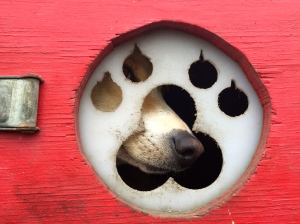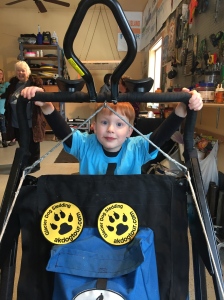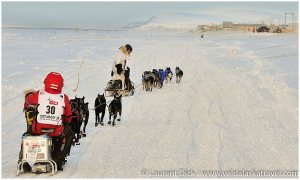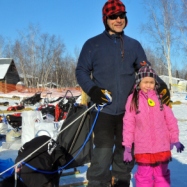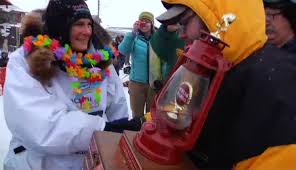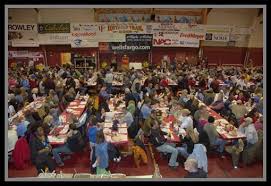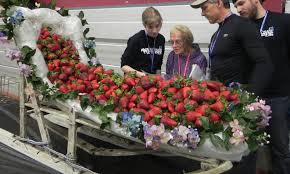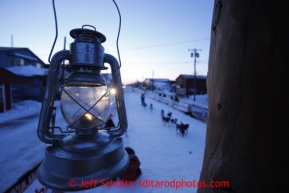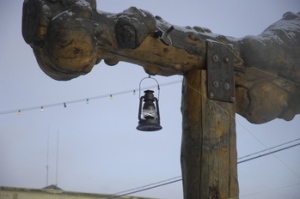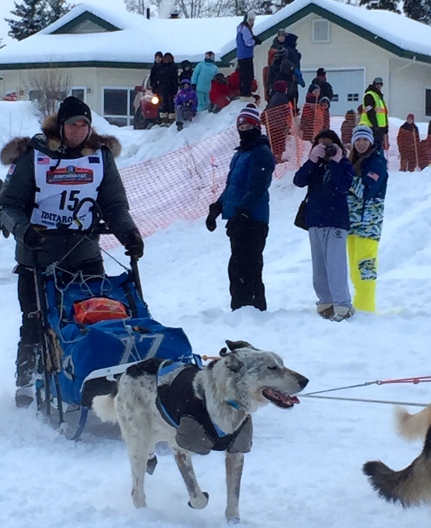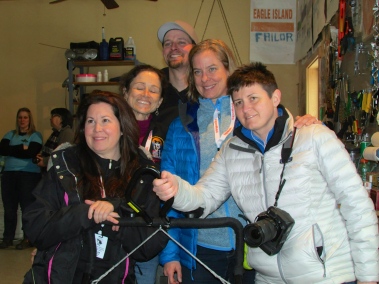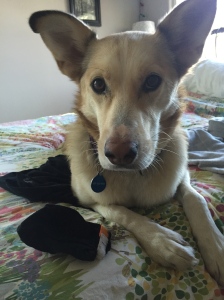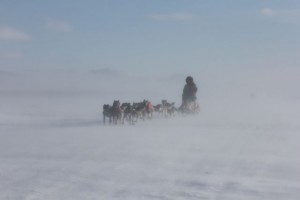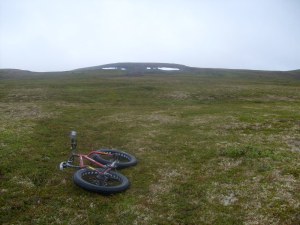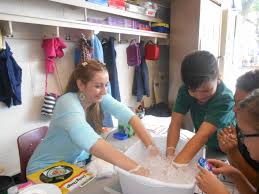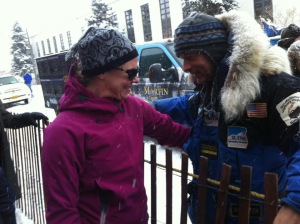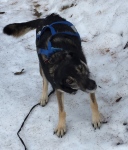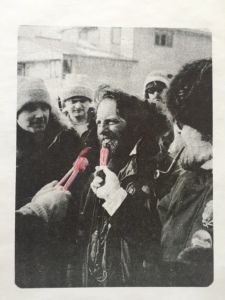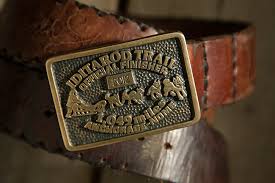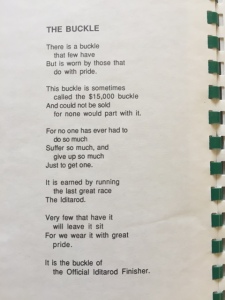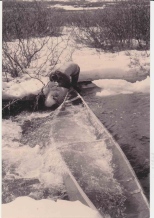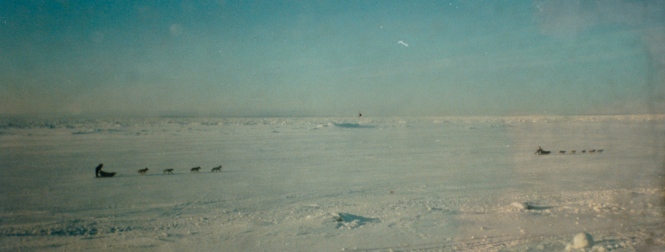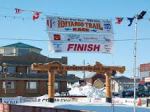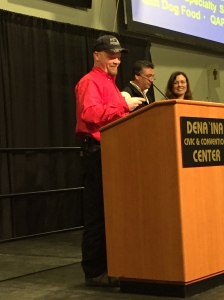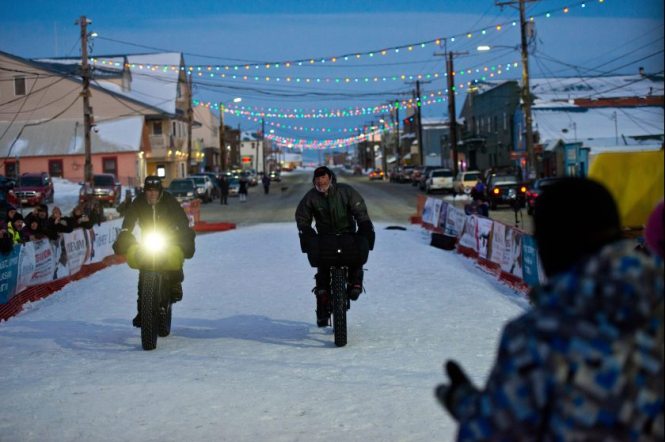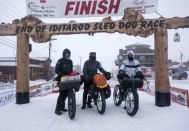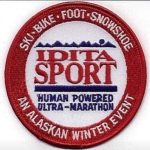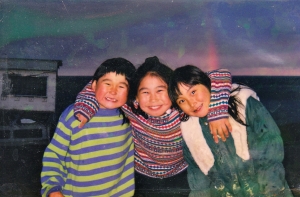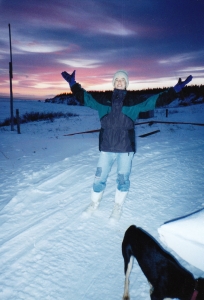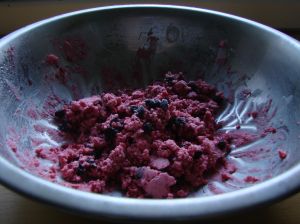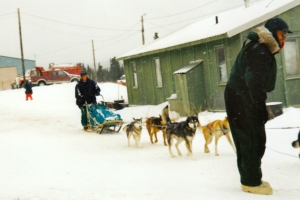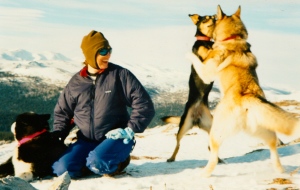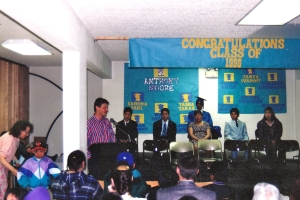Tale’s End
With the official end of the race nearing today, my own story as a finalist for Teacher on the Trail™ wraps up. I have had an amazing experience which definitely expanded my own personal teaching tool chest. Even more rewarding than the immediate impact is the positive community connections I’ve grown through this experience.
Through my discussions with people, we ruminated on why there is so much passionate interest in the Iditarod. We decided the Iditarod draws people in because of the beauty of Alaska’s wilderness and the superb dogs, the strong connections between the mushers and their dog team, and the spectacular network of support formed around the race. I think it’s because the Iditarod integrates so much while giving us inspiring beautiful images. It’s a journey that teachers can hook their students to and together travel as a team through math, science, history, language arts, art, and physical education activities.
While creating my presentation and curriculum, I focused on the Iditarod National Historic Trail, the amazing sled dog, and the stories that bind the two together. One of these stories is now climate change. (See my lesson plan on climate change here). Hopefully, the rapidly shifting climate in Alaska doesn’t force the Iditarod to change course, but it was great to see how the Iditarod Trail Committee skillfully created the course change, gave everyone time to prepare, and pulled off a successful restart in Fairbanks.
Stories that resonated with me from this Iditarod are listed below, with a link to a published account:
- Challenges with the extreme weather, including moving the restart
- Lance Mackey’s struggles with his health and his brother’s Jason’s incredible sacrifice to mush along with him.
- Scott Janssen’s hypothermia and ensuing rescue, including Lance Mackey mushing his dog team to Koyuk.
- Martin Buser and Jeff King backing off from the competition for 1st place to travel mode.
- Local Anchorage School District Teacher Brian Bearrs scratching in Koyuk after getting stuck in a horrible blizzard.
- The rookie of the year, Thomas Waener, from Norway.
- The unbeatable machine that is Dallas Seavey and his third Iditarod win with his father placing 2nd, creating a new Iditarod father/son record.
- Women Power! Record number of female mushers enter the race.
In 21 years of teaching Iditarod in Alaska, I’ve seen students naturally gravitate towards the huskies, and I’ve seen student performance actually increase with my dog in the classroom. Then there are the stories about the mushers. Some of my high school students struggle with lives that are way too difficult. I know that hearing about the musher’s struggles to overcome obstacles again and again on the pursuit of their journey inspires students and gives them valuable tools for conquering their own problems. I’ll be sharing stories from this year’s Iditarod with my students, hopefully with some classroom dog and musher visitors.
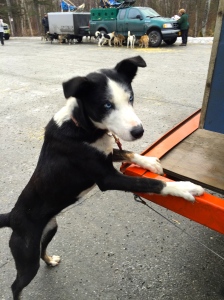 I’ve created a lesson plan unit for teachers to utilize storytelling and the Iditarod. It includes note taking while listening to stories, resources for teachers who don’t have access to mushers like myself, and then a creative writing assignment. Students can choose to fictionalize their own Iditarod tale or embellish a real story from the Iditarod, integrating real checkpoints and geography into their story.
I’ve created a lesson plan unit for teachers to utilize storytelling and the Iditarod. It includes note taking while listening to stories, resources for teachers who don’t have access to mushers like myself, and then a creative writing assignment. Students can choose to fictionalize their own Iditarod tale or embellish a real story from the Iditarod, integrating real checkpoints and geography into their story.
Please feel free to utilize these and any assignments I created on akwiley.weebly.com. My website has had over 400 visitors in the past three weeks! It’s been a great journey this year. My own story with Iditarod and Alaska is far from over, however. I will continue exploring the Iditarod Trail, meeting mushers, their beautiful dogs and inspirational families, and using their stories as a platform to teach and inspire my students.
- I love running into this sign while intersecting with mushing trails on a bike.
- The bears woke up early this year!
- My story with the trail is still being written.

